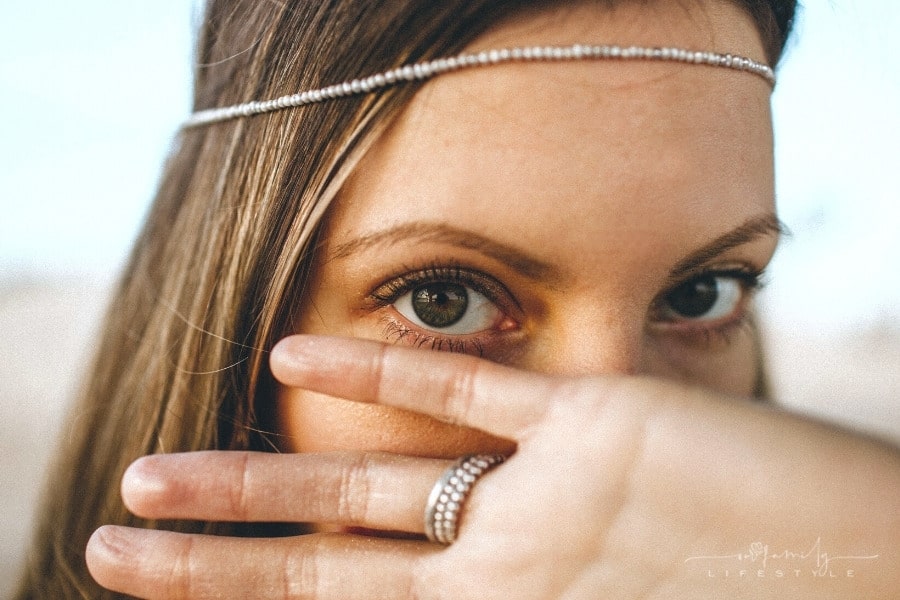Your Guide to Ethical and Sustainable Jewelry Shopping
Over the last few years, consumers have become increasingly conscious of their spending habits and lifestyle choices, with the intention of reducing their toll on the planet and its natural resources.
Whether it’s watching their carbon footprint, forgoing fast fashion in favor of sustainable fashion brands, or reducing their reliance on plastic, the desire to adopt more eco-friendly and sustainable practices is certainly on the rise.
One area that is not well-known for its environmentally friendly or ethical practices is the jewelry industry.
Sustainable Jewelry Shopping
The extraction of gemstones and precious metals such as gold can wreak havoc on the natural world resulting in issues such as deforestation, displacement and destruction of local wildlife, contamination of drinking water from toxic substances like mercury and cyanide, as well as air pollution.
In addition to this, Human Rights Watch reports that an estimated one million children around the world work in artisanal and small-scale mining, in violation of international human rights law.
With all of the hidden costs associated with jewelry production, its sparkle and allure can quickly wane and as a conscious consumer, these concerns can make it challenging to buy jewelry.

To make the process easier, this article has outlined some of the things to consider when making such a purchase in the future.
Go Lab-Grown
A lab-grown diamond is a diamond that has been created in a laboratory environment, as opposed to being mined from the ground.
This type of diamond is often identical in appearance and quality to diamonds that are mined, but they can be created much more quickly and at a fraction of the cost.
By comparison, lab-created diamonds offer consumers a sustainable, ethical, and eco-friendly alternative.
Whether you are in the market for some lab created diamond earrings or an engagement ring, you can rest assured that these diamonds come with a clean history offering you both peace of mind, as well as a beautiful piece of jewelry.
Choose Recycled Materials
By choosing recycled metals in your jewelry you are making more sustainable choices.
When recycled, precious metals like platinum, silver, and gold do not lose their intrinsic value but instead maintain the same high quality as if newly mined.
This benefits the environment immensely. When buying jewelry choose brands that use 100% recycled metals and reused gemstones, helping to achieve zero waste within the industry.
Do your homework and learn more about rose gold to see how it can give you a gorgeous accessory without sacrificing sustainability. This gives you an edge in the fashion world and reduces your impact on the environment.
This benefits the environment immensely. When buying jewelry choose brands that use 100% recycled metals and reused gemstones, helping to achieve zero waste within the industry.
Non-Polluting Production
In addition to the polluting effects of mining — which requires the burning of vast amounts of fossil fuels and emits noxious substances like carbon dioxide, mercury, and sulfur dioxide into the air — harmful chemicals such as cyanide that are used in gold mining are responsible for contaminating water supplies and soil, damaging the environment and endangering the health of people, aquatic creatures and wildlife.
Many mining operations further pollute the environment through the dumping of toxic waste into local waters.
According to some sources, 20 tons of waste is produced to extract enough gold for one wedding ring.
The manufacturing of jewelry can also produce different kinds of waste. Harmful chemicals are commonly used to clean and polish jewelry and by-products are often improperly disposed of resulting in contamination of the water supply.
Before you purchase an item of jewelry, check that non-toxic cleaners and polishes have been used and by-products have been disposed of correctly, without harm to ecosystems.
Do Your Research
Whether you are looking to buy a piece of jewelry for a family member, or that special someone, or simply to treat yourself, it can help to ask the right questions.
If you are unsure about the sustainability or ethical practices of a jewelry brand the following questions may help you get the answers you need:
- Is the brand transparent about its entire ‘mine to market’ journey and the origins of the materials it uses?
- Does their supply chain employ fair trade practices which ensure workers are paid a fair wage, suppliers a fair price and the sourcing and production of materials do not damage the environment or the sustainability of the region?
- Where do they source their materials from? Do they use recycled metals and reused and ethically sourced gemstones?
- Were non-toxic products used to clean and polish the jewelry?
- Are they a carbon-neutral certified brand or do they have a carbon footprint? If so, do they incorporate carbon offsetting?
- What packaging do they use for their products and is it fully recyclable or compostable?
- Do they keep waste to a minimum by using practices like upcycling where materials are reused rather than ending up in a landfill?
These are just some of the questions to consider when looking for an ethical and sustainable jewelry brand.
As this article highlights, many factors can determine whether an item of jewelry is suitable for you. Use the information provided to help guide you when making your next purchase.


